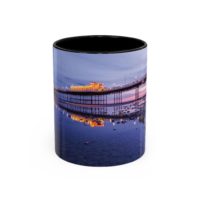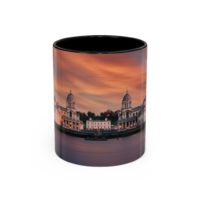Last week I went on an interesting guided tour of St James Park Gardens. Learning about all the interesting plants and meeting the Head Gardener, Verity Joyner. More tours will be done in the autumn. This is their first time running the tours, and it should be a regular event.
St James Park sits in the centre of London, England, and is one of the eight Royal Parks of the city. It covers an area of about 57 acres and is bordered by Buckingham Palace to the west, The Mall and St. James’s Palace to the north, Horse Guards Parade to the east, and Birdcage Walk to the south. The park is well known for its picturesque views, lush greenery, and diverse wildlife, particularly its famous pelicans.
I have been photographing the gardens for years and took this opportunity to take a guided tour which was more focused on the plants. Here are some interesting plants we saw and spoke about on tour.
Some of the interesting plants and trees include the Medlar tree (Mespilus germanica), where you can only eat the fruit after it is rotten. This is the same tree that was mentioned in Romeo & Juliet.
Another attractive tree is the Strawberry tree which sits in the flower borders near Horse Guards Road. Laiden with fruit in the early summer.
Next on our tour was the Maidenhair tree, also known as Ginkgo biloba. It is one of the oldest tree species in the world and is sometimes called the fossil tree. The fruit of the Maidenhair tree is a delicacy in China and is called the ‘silver apricot’.
There are lots of Babylon weeping willow trees around the park. Also known as Salix babylonica. Slender catkins are produced alongside the new leaves in spring.
The Rose Walk garden has Tibetan Cherry trees with their distinctive bark. Also, known as Prunus serrula, they are native to China and an ornamental tree in many parts of the world for their striking coppery-red bark.
Below you can also see the photographs I took.
Head Gardener
“We are delighted to bring the Head Gardener roles in-house. The passion and drive that these Head Gardeners bring to the role are an asset to the parks and to the horticultural teams that they manage. Seeing many of them start as The Royal Parks apprentices and work their way up to the role of Head Gardener is incredibly rewarding. It also demonstrates how worthwhile our apprenticeship programme is.”Tom Jarvis, Director of Parks at the Royal Parks
History of the Park
The history of St. James’s Park dates back to the 16th century when King Henry VIII acquired the previously marshy area and transformed it into a deer park for hunting. The name “St. James” comes from a leper hospital dedicated to St. James the Less that was situated on the site during the medieval period.
In 1603, King James I further developed the park by draining the marshland and creating a collection of exotic animals, including crocodiles and camels, and an aviary for exotic birds.
During the reign of King Charles II (1660-1685), the park underwent a significant transformation. Inspired by the gardens he had seen during his exile in France, Charles II redesigned St. James’s Park, introducing a more formal landscape with a central avenue of trees and a long, straight canal. The park also became a popular venue for courtiers and fashionable society, where they could stroll and mingle. Charles II opened the park to the general public, making it one of the earliest public parks in London.
In the early 19th century, the park underwent another major redesign under the direction of John Nash, a leading architect and city planner. Nash created a more natural landscape, replacing the formal avenues and straight canals with sinuous paths, a serpentine lake, and irregularly shaped lawns. He also added many of the park’s most iconic features, such as the Blue Bridge, which provides a scenic viewpoint over the lake.
How to get to St James Park?
Photos were taken on the tour
More photos can be found on my links below.









